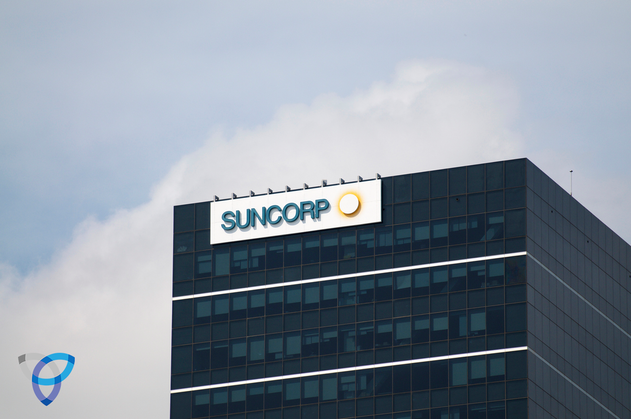
Earned Premium
The insurance industry in Australia is a somewhat competitive environment, it has also seen heavy consolidation over the last few years. When we last wrote on Suncorp in 2021, top-line growth was our biggest issue. With changes to senior management, including the promotion of the CFO to the top job, concern remained around the new strategy going forward. On this front, Suncorp has performed relatively well. GWP (Gross Written Premiums) are on a significant double-digit growth trajectory. Specifically, home insurance was up 12.1% and 11.7% in Motor, while NZ increased another 12.2%.
This shows us that the business is on firm footing and momentum-wise. At the same time, we do see this slowing down given base effects, primarily since much of the growth was driven by solid premium increases (i.e. a particularly trying time in relation to natural hazards), while Motor also reflects elevated underlying claims inflation and higher sums insured. On the latter point, assuming our base case is that inflation starts to come down, we should also see a flow-on impact on premiums.
Nevertheless, the overall result has shown that management’s strategy seems to be working.
So on the first part of our equation, Suncorp gets a pass. We now move on to the second part of the equation; investment income.
Investment Income
This is perhaps the most apparent tailwind that most might think of when it comes to rising rates and the impact on an insurance business. Despite the volatility in investment markets through the course of the year, the firm’s prudent allocation, especially in relation to ILB (Inflation Linked Bonds) and investment grade, has meant that:
1) It has provided an offset to claims of inflation
2) Increased the average yield on insurance funds to above 5%.
Assuming that we continue to see a hawkish tilt to central bank policy, the increase in yields should, in our view, continue to more than offset mark-to-market losses on risk-free bonds (i.e. treasuries) and breakevens.
The bank continued to prudently decrease exposure to equities while increasing exposure to infrastructure and property assets. It must be noted, however, that on the latter, the investor has to be a little more discerning (i.e. revaluations). Overall a stellar result and one that shows that the strategic allocation of the business is both prudent and well-suited to the current environment.
On the second part of the equation, we would rate exceptional. We now move to the third part, Incurred Loss.
Incurred Loss
Let’s go to the definition first. The definition of incurred loss is the total amount of benefits paid to policyholders during the current year plus changes to loss reserves from the previous year. Here it is perhaps appropriate to break this definition down into two components. The first is the benefits paid, which more often than not, has a lot more to do with external events outside of the firm’s control and the loss of reserves (which indicates the extent or certainty to which the firm is able to forecast future loss).
On the first point, the business continues to battle the weather gods. The La Nina weather cycle has disproportionately impacted the natural hazard costs exceeding the allowance by 99 Million (this being the third consecutive cycle). Furthermore, flooding in NZ in Jan should see this continue to take a heavy toll (we won’t know the full extent as of yet). Going forward, we see this aspect (i.e. increasingly unpredictable weather patterns) play a prominent role in the business. Whether you attribute this to man-made activity or historic climate cycles, weather patterns are changing and will play a more significant factor in the business outlook.
This brings us to the second part, the firm’s ability to adequately forecast and manage its risk profile (hence reserves). The firm’s skew to QLD and areas with greater exposure to the La Nina have a twofold impact. It must pay higher premiums for reinsurance and keep more catastrophe risk on the balance sheets (which history shows Australian insurers aren’t particularly good at). In this instance, we agree with Andrei Stadnik, the Morgan Stanley analyst’s view that the business needs to emphasise this risk more and not just by using its market leadership in hiking premiums.
In our view, this will be the most significant long-term headwind (i.e. geographic diversification) and their ability to manage catastrophe risk.
Suffice it to say, on the third part of the equation, we say – partial pass. For now, the business’s market power (i.e. the ability to pass on premium increases) seems to outweigh its longer-term risks.
Underwriting Expense
This brings us to the final part of the equation, and with an ex-CFO in charge, as expected, this is one area in which we should expect to see some good performance. Indeed, the guidance regarding ITR previously elaborated on was in no small part a result of operational efficiencies and overall expense reduction. The group has, in fact, confirmed the AUD 2.7 billion in cost savings are on track to be achieved and with a group cost-to-income ratio of 49.9%. Pleasingly the firm seems to have handled the inflationary pressures quite well.
On this front, we can give the business an excellent stellar mark.
Overall Outlook & Growth
Overall the business seems to be on track to continue to deliver for shareholders in the medium term. Investment Income should continue to grow, and even if monetary policy stabilises, we expect overall insurance yields to remain elevated with the benefit of recovery in mark-to-market losses. While we expect earned premium growth to stabilise along with inflation and cost-out initiatives, we expect this to be a reasonable long-term income play. Circa. 5% dividend yield with a high single-digit growth rate going forward.
That said, over the longer term, we continue to watch for signs of better risk management, especially regarding geographic diversification and catastrophe risk.
